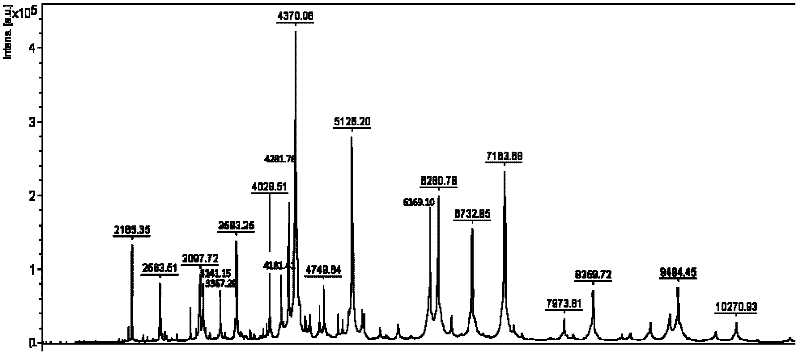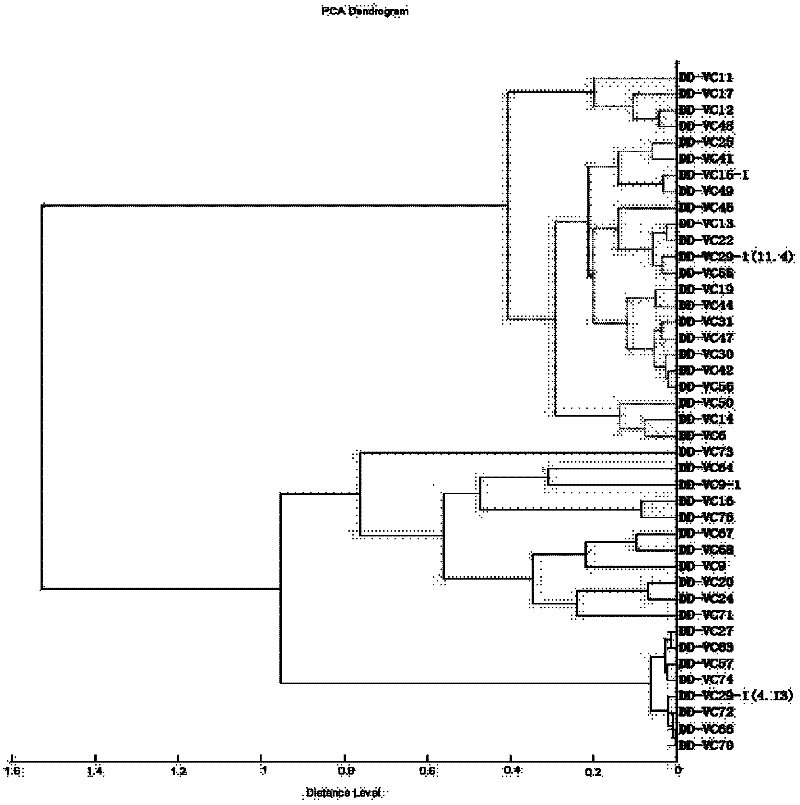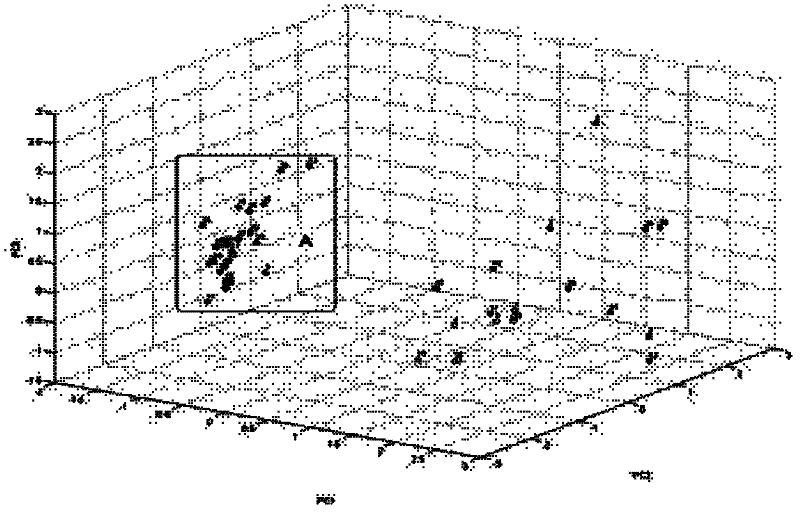Method for auxiliary identification of comma bacillus by matrix-assisted laser desorption ionisation-time-of-flight mass spectrometry (MALDI-TOF MS)
A MALDI-TOF-MS and Vibrio cholerae technology, applied in the field of assisted identification by matrix-assisted laser desorption ionization time-of-flight mass spectrometer, can solve the problems of insufficient database resources, lack of characteristic spectra of Vibrio cholerae, etc., and achieve simple sample preparation Effect
- Summary
- Abstract
- Description
- Claims
- Application Information
AI Technical Summary
Problems solved by technology
Method used
Image
Examples
Embodiment 1
[0055] (1) Select Vibrio cholerae strains
[0056] 42 strains of Vibrio cholerae collected by Liaoning Entry-Exit Inspection and Quarantine Bureau were selected, including 23 strains of Vibrio cholerae O1 group, 11 strains of Vibrio cholerae O139 group and 8 strains of Vibrio cholerae non-O1 / non-O139 group Vibrio cholerae, specific information See Table 1. Vibrio cholerae involved in Table 1 was further confirmed to be Vibrio cholerae through API-20E biochemical identification and automatic bacterial biochemical analyzer identification, which can be used to establish a standard map for MALDI-TOF MS identification.
[0057] Table 1
[0058]
[0059]
[0060] (2) Sample processing:
[0061] The isolates of Vibrio cholerae were respectively inoculated on NA medium, and cultured at 37° C. for 24 hours to obtain fresh strain cultures. Take a fresh culture of Vibrio cholerae, add 300 μL of pure water to an Eppendorf tube, pick an appropriate amount (5-10 mg) of bacteria, mi...
Embodiment 2
[0082] MALDI-TOF-MS clustering analysis of 42 strains of Vibrio cholerae
[0083] On the basis of Example 1, the similarity of the main spectra of 42 strains of Vibrio cholerae in the obtained Vibrio cholerae MALDI-TOF-MS database was calculated by pattern matching, and the similarity score was used to construct a phylogenetic tree, and the 42 strains were clustered Type analysis, the resulting cluster type dendrogram is attached figure 2 shown. The level of difference represents the relatedness to each other with a value between 0 and 1.6. A difference of 0 means that the two MALDI-TOF-MS mass spectra are identical and can be assigned to the same class; a difference of 1.6 means that the cluster analysis results of the existing data show that the relationship between the two strains is the farthest. The number of types of Vibrio cholerae is different when the selected difference level is different. When the difference level was 1, the MALDI-TOF-MS typing results divided t...
Embodiment 3
[0086] MALDI-TOF-MS clustering analysis of 42 strains of Vibrio cholerae
[0087] Among the 42 strains of Vibrio cholerae in Example 1, 23 strains belonged to O1 group Vibrio cholerae, 11 strains belonged to O139 group Vibrio cholerae, and the remaining 8 strains were all non-O1 non-O139 group Vibrio cholerae. Get the mass-to-charge ratio data of 42 strains of Vibrio cholerae in the database, further utilize Matlab R-2007a (Matlab Com., USA) software, carry out principal component analysis (PCA) to the spectrogram of these 42 strains of Vibrio cholerae, PCA analysis result as attached image 3 shown. The results showed that 23 strains of O1 group Vibrio cholerae were relatively concentrated (the box A area in the figure), while the other 19 strains of O139 and non-O1 / non-O139 group Vibrio cholerae were relatively scattered. This indicated that the major constituents were basically the same among O1 V. cholerae and significantly different from those of O139 and non-O1 / non-O139...
PUM
 Login to View More
Login to View More Abstract
Description
Claims
Application Information
 Login to View More
Login to View More - R&D
- Intellectual Property
- Life Sciences
- Materials
- Tech Scout
- Unparalleled Data Quality
- Higher Quality Content
- 60% Fewer Hallucinations
Browse by: Latest US Patents, China's latest patents, Technical Efficacy Thesaurus, Application Domain, Technology Topic, Popular Technical Reports.
© 2025 PatSnap. All rights reserved.Legal|Privacy policy|Modern Slavery Act Transparency Statement|Sitemap|About US| Contact US: help@patsnap.com



